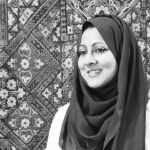- Academics
- Admissions
- Enrollment & Registration
- Research
- Academic & Creative Spaces
- Strategic Partnerships
- Our Impact
- Student Affairs
- Alumni
- About VCUarts Qatar
- Community & Continuing Education
ADMISSIONS FOR FALL 2026 NOW OPEN
IA02) Islamic Geometry and Watercolor

About this class
Explore the world of painting and the application of color to Islamic geometric patterns, and experiment with different approaches that can change the appearance of a single pattern in myriad ways.
Participants will learn color theory and harmony, pigment and paint properties, the principles of color mixing, and learn several exercises in order to create harmonious palettes.
This course is for anyone interested in improving their watercolor control and skill, and developing their own personal style to paint beautiful geometric patterns.
Class Outline
- 1\. Introduction to the medium, discussion of color theory and swatch making
- 2\. Continuation of swatch making, making a color sketchbook
- 3\. Color exploration and how to create color themes and palettes
- 4\. Painting a bookmark (Project 1)
- 5\. Drafting a geometric pattern onto watercolor paper (Project 2)
- 6\. Exploration of color application and special effects
- 7\. Continuation of color and painting the final pattern
- 8\. Painting the final pattern
Materials needed
Please note: VCUQatar reserves the right to cancel classes for which not enough participants are registered. Already paid fees will be refunded.
Please do not purchase materials until VCUQatar has sent final course confirmation.
Items to buy for this class
- 1. Artist-grade watercolor paints
(Brand recommendations available in Doha: Schmincke, Winsor & Newton, Sennelier, Rembrandt, Rosa Gallery, Van Gogh) - 2. Artist-grade watercolor paper of two varieties:
A) For practice:
Regular cellulose-fibre/wood pulp paper pad or booklet, any size
B) For paintings:
100% cotton paper pad, or large single sheet, any size - Both to be minimum of 300gsm/140lb thickness, and “Cold Press” texture
- 3. Artist-grade watercolor brushes:
Synthetic round brushes: sizes 4 and 6
Synthetic flat brush: ¼ or ½ inch
(Brand recommendations: Pebeo Iris series) - 4. Artist’s Color Wheel
- 5. Watercolor palette with space for color mixing
Available in ceramic, enamel, or plastic. Ceramic is preferred, but any others will suffice.
A white ceramic dinner plate or glazed tile would also work well. - 6. Reusable glass jars (at least two) as water containers
- 7. Water dropper or pipette
- 8. Roll of removable masking tape
- 9. Small towel or rag
- 10. Tissue
- 11. Drawing tools:
Mechanical pencil
Clear plastic ruler
Soft eraser
Tracing paper
Waterproof ink or pigment liner pen
On occasions, there may be some more materials to be bought and brought in if and when advised by the instructor.
Where to buy your materials
Most of the materials are available from any art supply shop, for example:
- Cass Art (Fire station): Community Classes students get a 15% discount upon presenting the registration ticket
- Jarir Bookstore: on Rayyan Road or Salwa Road
- Color Note: on Al Nasser Street
- Ibn Al Qayyim: at Markhiya Roundabout
- Al Rawnaq
Schedule
Start: Sat, 27 Feb, 2021
End: Wed, 31 Mar, 2021
Lessons: 10
Days: Saturdays and Wednesdays
Time: Saturday: 11AM – 1:40PM and Wednesday: 4pm to 6:40 pm
Location: Online
Cost: QAR 1500
Instructors

Aziza Iqbal
Influenced by tradition and channeling the contemporary, Aziza Iqbal is a visual artist and pattern specialist based in Qatar. Her foundation lies in the geometry and spirit of Islamic art, crafts and architecture.
Previously a graphic designer, and having always been inclined towards mathematics with a penchant for details, she has done several courses in sacred geometry with the UK-based Art of Islamic Pattern tutors and workshops with the Prince’s School of Traditional Arts.
Aziza has travelled extensively to Andalucía, Turkey, India and Morocco to study Islamic architectural heritage, and this has been the main inspiration for her work. She is also greatly influenced by the geometric tribal carpet patterns from across the Middle East/North Africa region (MENA) and Central Asia.
Register
To register for this course, access the form.

